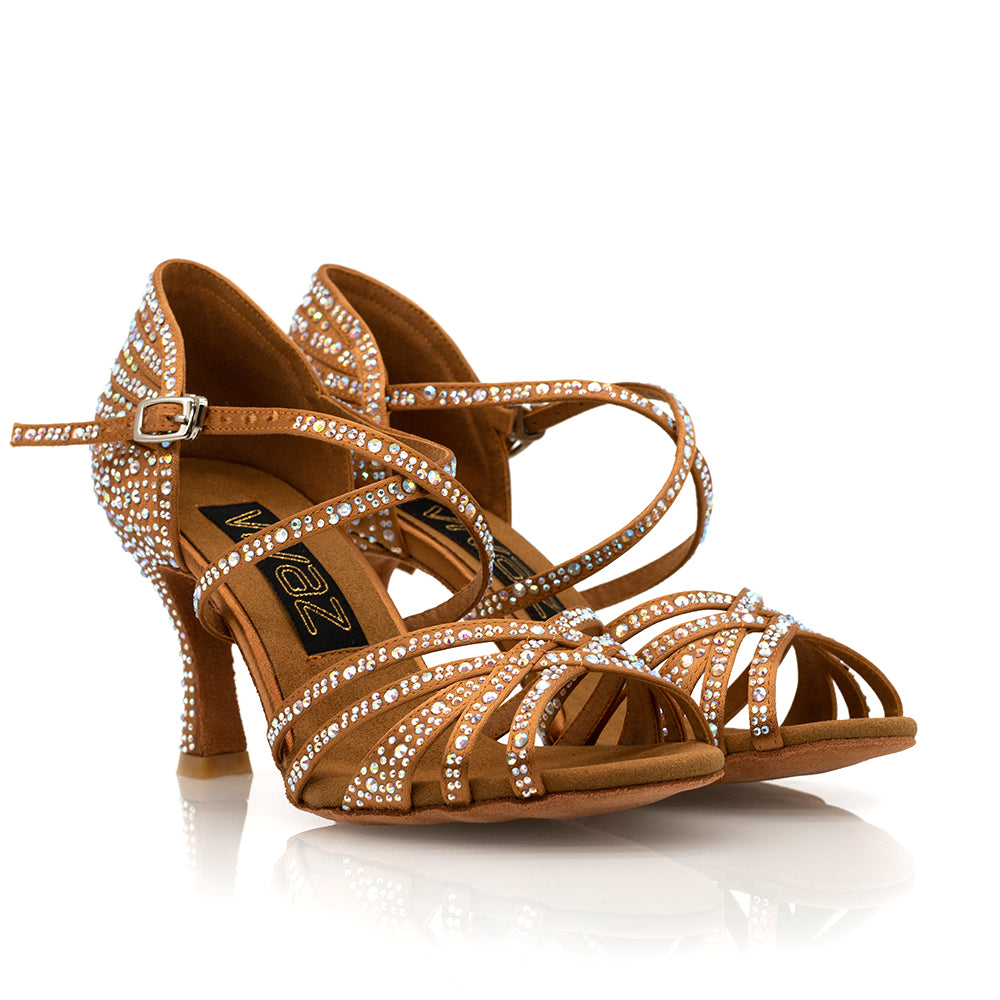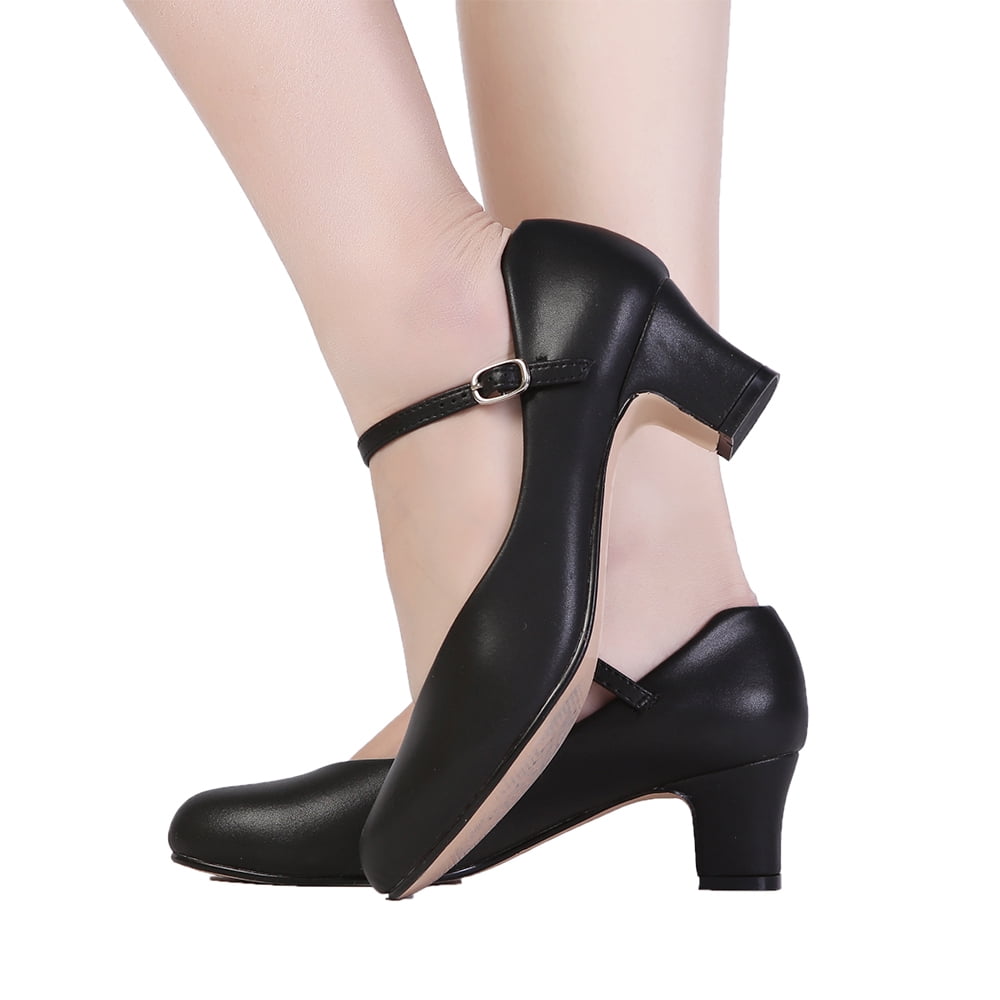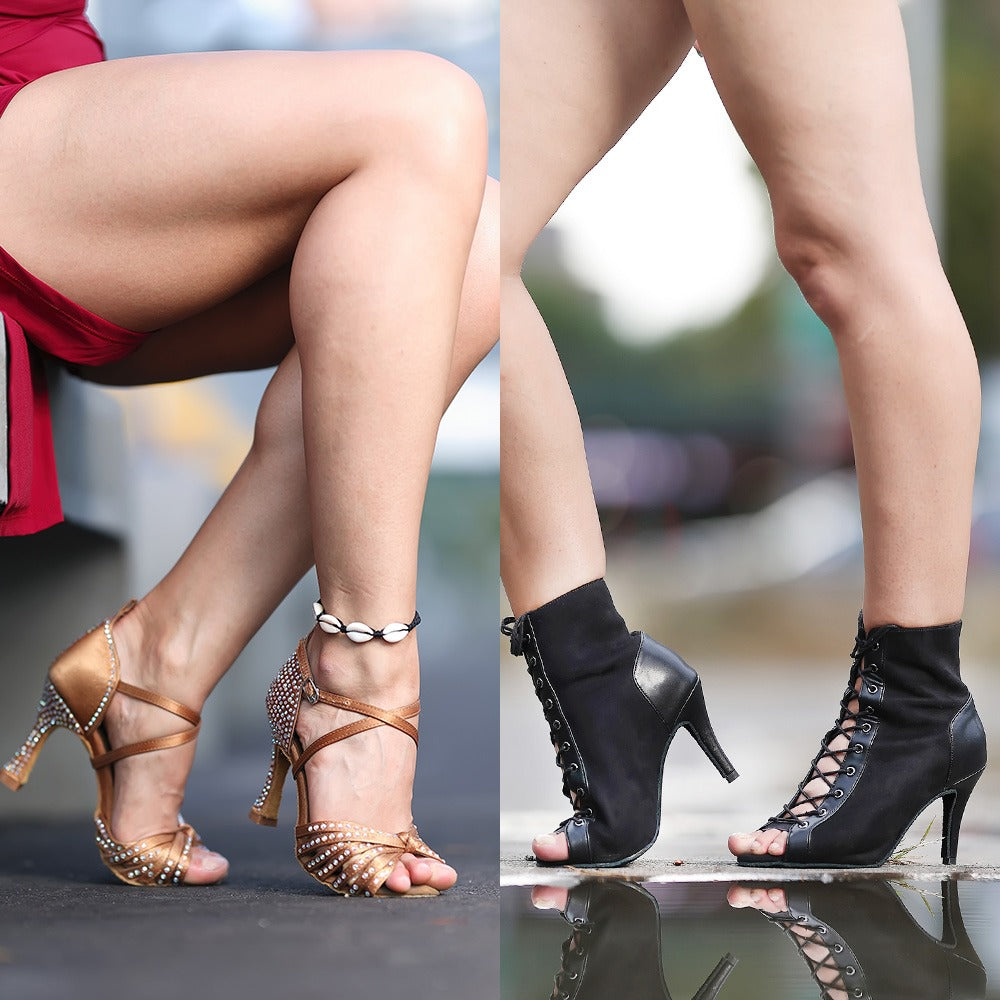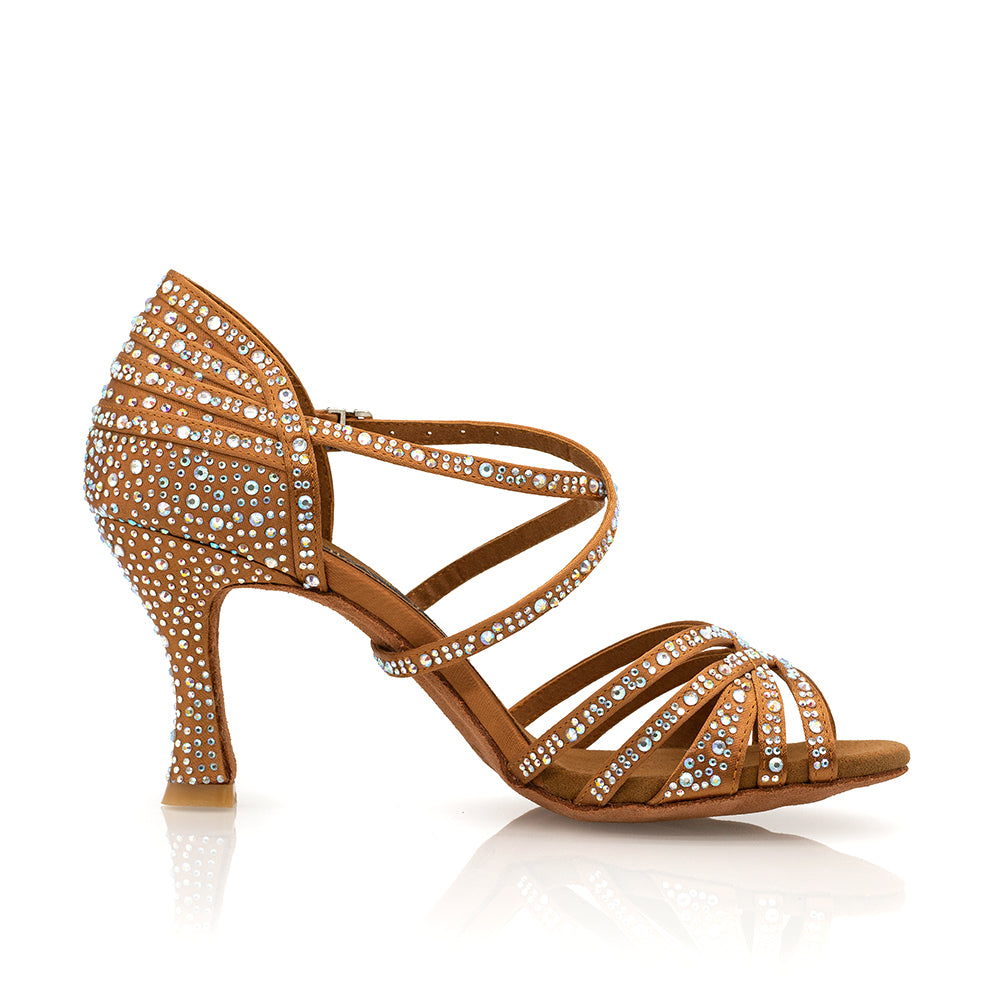Why the Right Dancing Shoes Matter
Selecting the right dancing shoes for women is not just about style. Comfort, safety, and performance are key. Proper shoes can prevent injury. They offer support for foot arches and cushion impact. Good grip ensures stability on the dance floor. They can boost confidence, allowing you to focus on your moves. Quality dancing shoes enhance dance routine execution. They can reduce fatigue, allowing for longer dance sessions. Shoes with the right fit, material, and design improve dance experience. They are an investment in your dance journey and well-being. Overall, the right dancing shoes are crucial for any dancer’s success and enjoyment.

Types of Dancing Shoes for Different Dance Styles
When choosing dancing shoes for women, consider the dance style. Different styles require specific types of shoes for optimal performance. Here are common types you should know:
- Ballet Slippers: Soft, lightweight, and flexible, they fit the feet snugly without any heels. Essential for classical ballet.
- Tap Shoes: They have metal plates attached to the soles to create the distinctive tap sound. They’re ideal for tap dancing.
- Jazz Shoes: These shoes are flexible with a low heel. They enhance foot articulation, crucial for jazz dancers.
- Ballroom and Latin Shoes: Designed with a heel to aid in posture. They offer support for complex footwork in dances like salsa, tango, and waltz.
- Contemporary Dance Shoes: Often feature a split-sole for flexibility. They form to the foot, allowing for expressive movement.
- Hip-Hop Sneakers: They have thick soles and provide ample support for the dynamic movements in hip-hop.
- Flamenco Shoes: Sturdy with nails in the heel and toe for sound. They support the intense footwork in flamenco dancing.
- Folk Dance Shoes: Vary widely based on regional traditions. They can range from boots to embroidered shoes.
Match shoes not only to your dance style but also comfort and fit. This way, you ensure performance and reduce injury risk.
Key Features to Look for in Women’s Dancing Shoes
When shopping for dancing shoes for women, there are several features to consider. These features determine comfort, safety, and performance. Here’s what to look for:
- Proper Fit: Make sure the shoes fit snugly without pinching or slipping. The fit should allow for natural movement.
- Support: Look for shoes with good arch support and a secure ankle strap. These features help prevent injury.
- Flexibility: Shoes should bend with the foot. Too stiff, and they inhibit movement; too soft, and they may not support.
- Heel Height and Shape: Choose the right heel height for your dance style. Flatter for stability or raised for style-specific moves.
- Sole Type: Consider the sole material for the right balance of grip and slide. Suede or leather soles are common choices.
- Cushioning: Adequate cushioning absorbs shock. It makes long dance sessions more comfortable.
- Breathability: Materials that allow air flow help keep feet dry. This can prevent blisters and discomfort.
Review these key features before purchase. Good dancing shoes for women support your feet, aid performance, and enhance your dance experience. Choose wisely for your dance style, comfort, and health.

How to Determine the Correct Fit for Your Dancing Shoes
Ensuring your dancing shoes fit correctly is vital. A good fit boosts your confidence and performance. Follow these steps to determine the correct fit for your dancing shoes:
- Measure Your Foot: Use a measure tape or visit a shoe store. Get accurate length and width measurements.
- Try Them On: Always try on shoes later in the day. Your feet naturally expand with use.
- Check the Width: Shoes should be snug, not tight. You should be able to move your toes.
- Heel Security: Your heel must stay in place. Ensure no slipping occurs when you move.
- Room for Movement: While snug, you should not feel constricted. Test with a few dance moves.
- Arch Support Check: Proper arch support is non-negotiable. Feel for the right amount of support.
- Listen to Your Body: Any discomfort is a sign. Comfortable dancing shoes for women should feel like a second skin.
Remember, a well-fitting shoe enhances your dancing ability. Do not settle for less.
The Best Materials for Women’s Dancing Shoes
Choosing the right material for your dancing shoes is essential. The material affects comfort, durability, and performance. Here are the best materials for women’s dancing shoes:
- Leather: Offers flexibility and support. Molds to your feet over time for comfort. Suitable for ballroom and Latin styles.
- Canvas: Lightweight and breathable. It’s often found in ballet slippers and contemporary shoes.
- Satin: Traditional material for ballroom dance shoes. It looks elegant but may not be as durable as leather.
- Suede: Provides great traction on the dance floor. Commonly used for soles to balance grip and smooth movement.
- Mesh: Enhances breathability. Often used in modern and hip-hop dance sneakers for comfort during intense routines.
Each material offers unique benefits. Leather is long-lasting and shapes to your foot. Canvas and mesh keep your feet cool. Satin adds a touch of elegance, while suede soles allow for perfect slides and spins.
Pick your material based on the dance style, how often you dance, and where you dance. Comfort and fit come first, but the right material will enhance your dancing experience. Remember to factor in the material when purchasing your next pair of dancing shoes for women.
Caring for Your Dancing Shoes
Proper care extends the life of your dancing shoes for women. Here’s how to maintain them:
- Clean Regularly: Wipe off dirt and sweat after each use. Use a damp cloth for leather and a soft brush for suede soles.
- Dry Them Out: Let your shoes air dry away from direct heat. This prevents material damage and odor build-up.
- Store Properly: Keep shoes in a breathable bag or box. Avoid cramped spaces that could deform them.
- Rotate Pairs: If you dance often, use different pairs. This gives shoes time to recover their shape.
- Use Shoe Trees: Insert shoe trees when not wearing them. They help retain the shoe’s form.
- Repair Damages: Fix loose seams or heels immediately. Delay can lead to irreparable damage.
Taking these steps will keep your dancing shoes in top condition. Caring for them is investing in your dance performance and comfort.
Top Brands and Where to Buy Women’s Dancing Shoes
Finding top brands is crucial for quality dancing shoes for women. Popular brands are known for durability and design. They specialize in shoes that enhance dance performance. These brands often lead in innovation. They tend to offer a wide range of styles for various dance forms. Examples of top brands include Capezio, Bloch, and Freed of London. These brands offer options for ballet, tap, jazz, and more.
Shopping for these brands is easy. Many local dancewear shops stock top brands. Visiting these stores allows you to try on different styles. Online shopping is another option. Websites like Amazon, Zappos, and the brands’ own sites offer convenience. They often provide detailed size charts and reviews. However, be sure to check return policies when ordering online.
Specialist dance shoe stores are also worth visiting. They offer expert advice and fittings. These stores often feature a larger variety of shoes. This includes dance-specific styles that general retailers may not carry. For deals, check out dance supply stores, clearance sales, and second-hand options. Dance conventions and competitions also sometimes have pop-up shops.
Remember to consider fit, material, and style for your dance needs. Whether in-store or online, quality should guide your purchase. Top brands will serve you well on the dance floor. Invest in reputable brands to ensure the best dancing experience.

Factors that Affect the Price of Dancing Shoes for Women
When you shop for dancing shoes for women, you’ll notice a range of prices. Several factors influence the cost. Here’s what contributes to the price tag:
- Brand Reputation: Well-known brands typically charge more. Their shoes often offer better quality and durability.
- Material Quality: High-quality materials like top-grade leather increase the shoe’s price. They often last longer and fit better.
- Shoe Design: Complex designs with extra features, such as unique straps or soles, can raise the price.
- Type of Dance: Shoes for certain dance styles require specific design elements. This can lead to higher costs. For example, pointe shoes for ballet have unique construction that may be pricier.
- Manufacturing Process: Handcrafted shoes cost more than mass-produced ones. The extra labor and skill increase their value.
- Distribution Channel: Buying directly from a brand might be cheaper than through a retailer. Retailers often mark up prices.
- Technology: Advanced features, like shock absorption or special arch support, can add to the cost.
- Import Fees: If shoes are made abroad, import taxes and shipping costs may raise the price.
Keep these factors in mind as you search for the perfect pair. A higher price can mean better quality and comfort. However, weigh the cost against your dancing needs and budget. Remember, investing in the right pair of shoes can be beneficial in the long run.
